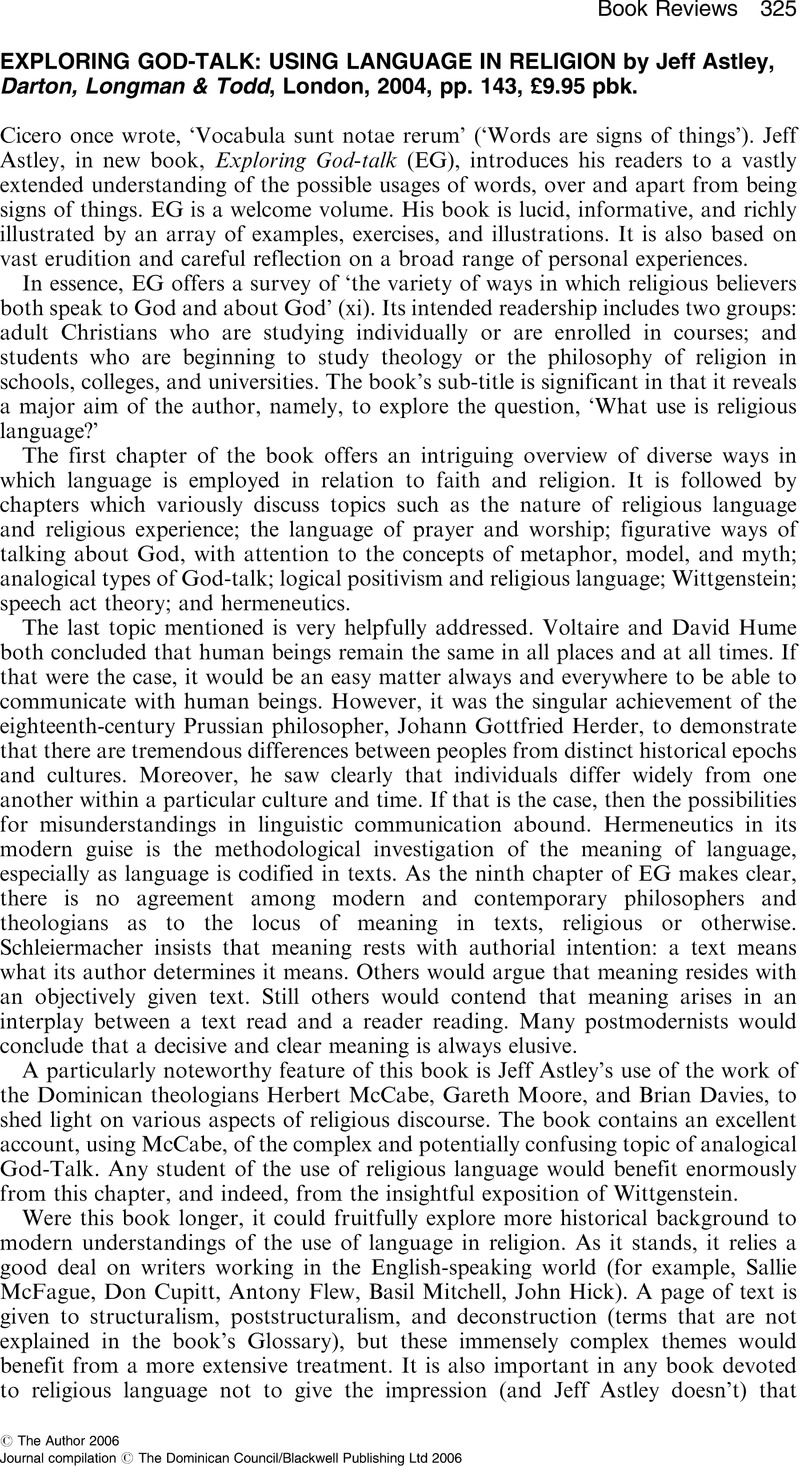No CrossRef data available.
Article contents
Exploring God-Talk: Using Language in Religion by Jeff Astley, Darton, Longman & Todd, London, 2004, pp. 143, £9.95 pbk.
Review products
Exploring God-Talk: Using Language in Religion by Jeff Astley, Darton, Longman & Todd, London, 2004, pp. 143, £9.95 pbk.
Published online by Cambridge University Press: 01 January 2024
Abstract
An abstract is not available for this content so a preview has been provided. Please use the Get access link above for information on how to access this content.

- Type
- Reviews
- Information
- Copyright
- © The Author 2006 Journal compilation © The Dominican Council/Blackwell Publishing Ltd 2006


